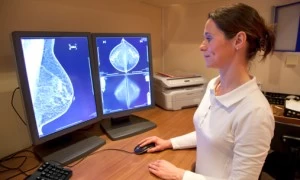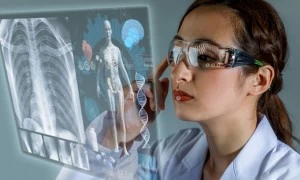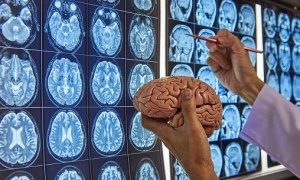Category:
Back to News and EventsBreast Education
Benign Breast Lumps
Below are different kinds of benign (non-cancerous) breast lumps. COMMON BREAST LUMPS CystsFluid-filled sacs that tend to form and dissipate spontaneously within the breast tissue. They form when fluid from the glandular breast tissue is pushed o...
Breast Education
Breast Density
Breasts are considered dense if they primarily consist of fibrous or glandular tissue and little fatty tissue. Much like lumps, both benign and cancerous, dense breast tissue appears white on a mammogram, making it difficult to distinguish normal tis...
Breast Education
Breast Pain
My breasts hurt. Should I be worried? If you have breast pain, you are not alone. Breast pain, also known as mastalgia, is common and accounts for 45-70% of breast-related health care visits. The good news is that most causes of breast pain are ben...
Breast Education
Breast Rash/Irritation
Definition: Red/reddish-brown rash or irritated skin under breasts. The area can become raw with open areas of oozing, the skin may be cracked or crusty, a bacterial or fungal (yeast) infection can develop in this warm, moist area. The medical ter...
Breast Education
Calcifications
Radiologists look for tiny white specks within the breast tissue on a mammogram. These are called calcifications. They are extremely common and usually benign (non-cancerous). Widely scattered or larger white spots are normal within the breast. Som...
Breast Education
Gynecomastia
What is Gynecomastia? Gynecomastia is enlargement of the male breast due to growth of normal breast tissue. It is the most common disorder in the male breast. It may be detected incidentally at the time of a routine physical examination. Patients m...
Breast Education
Lobular Carcinoma In Situ
Lobular: Lobules are the milk producing structures. In Situ: In the lobule, refers to tumors that have not grown beyond their site of origin. Lobular carcinoma in situ is classified as a high risk lesion for further development of breast cancer o...
Breast Education
Nipple Discharge (Non-Lactating)
The function of breasts is to produce milk. Sometimes a woman makes milk even when she is not breast-feeding. This nipple discharge is called galactorrhea. Women are more prone to nipple discharge at puberty and just prior to menopause. A woman with ...
Breast Education
Painful Lumps
Should You Worry Breast tumors are rarely painful. In most cases, painful lumps are harmless cysts or fluid-filled sacs, but not always. That is why a mammogram is the first step in checking to make sure your lump is benign. What is done when a c...
Breast Education
Radiation Safety and Mammography
Mammography is a specific type of imaging that uses a low dose x-ray system for examination of the breasts. Most medical experts agree that successful treatment of breast cancer is linked to early detection. Mammography plays a central role in the de...














































































